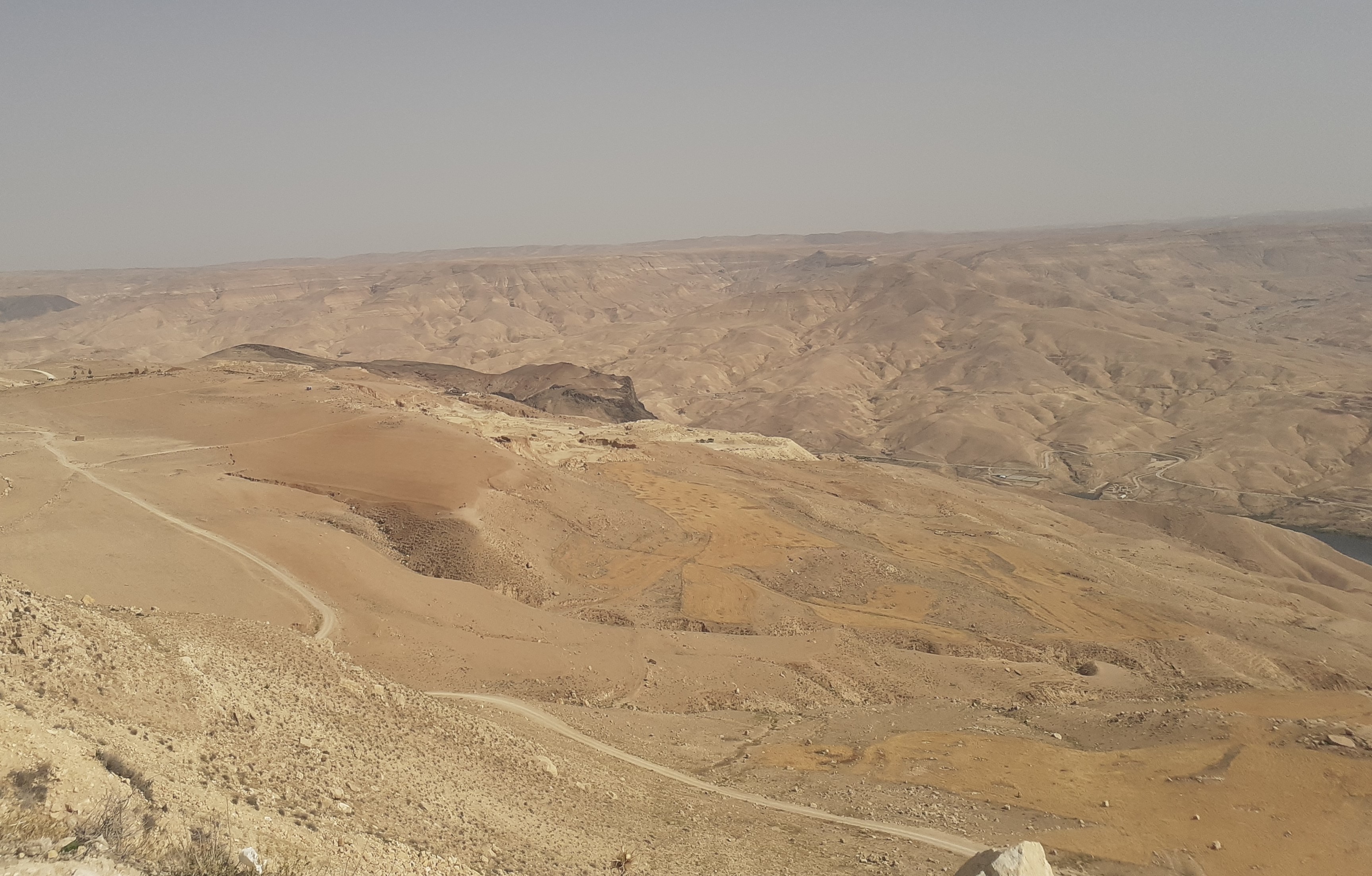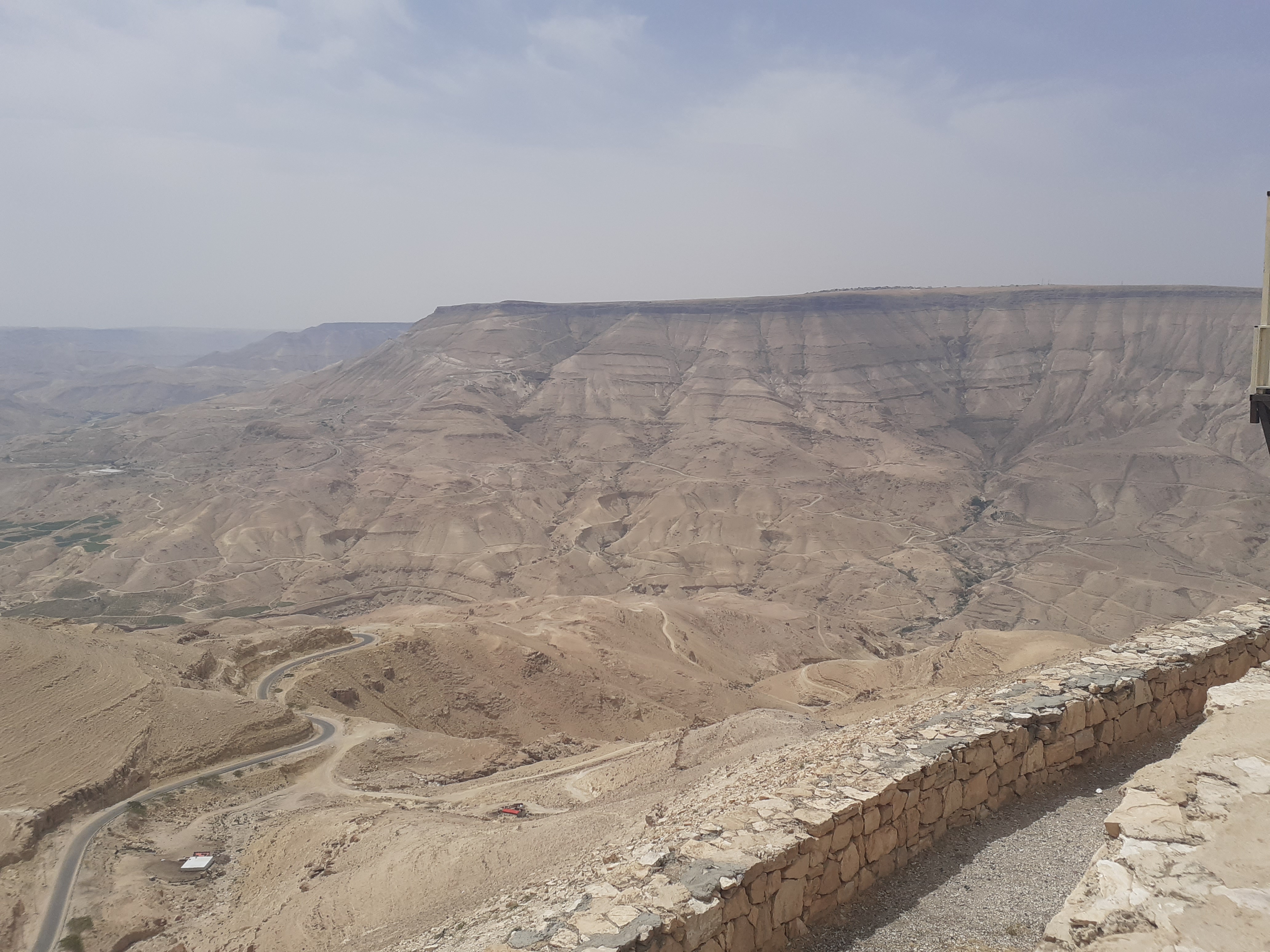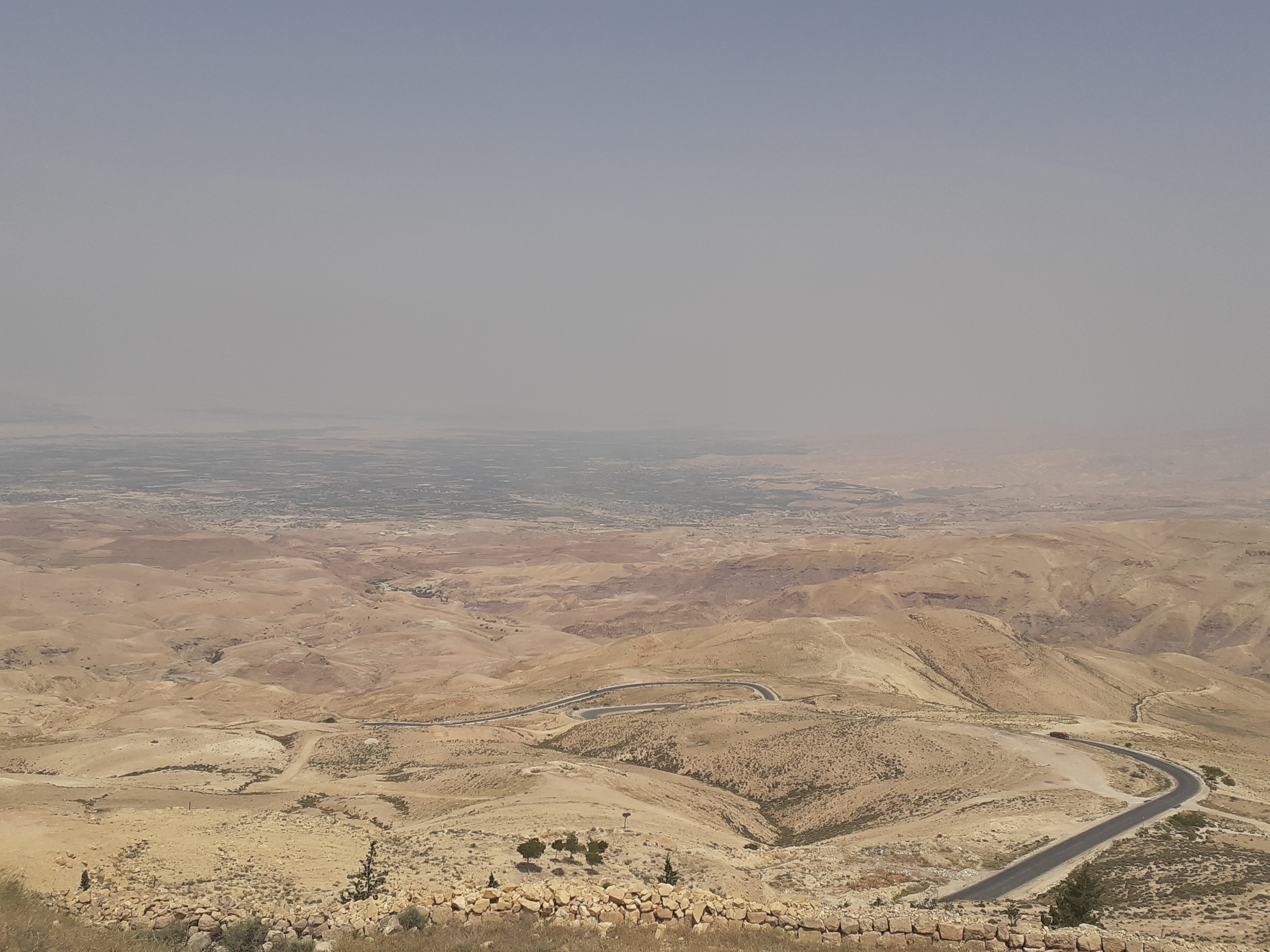Num 21:10-12 In c.1407BC, thirty-eight years after the spies had been sent out from Kadesh (see Deuteronomy 2:14), Moses leads the Israelites north again towards Canaan (see 8 on Map 45).
They avoid Edom by travelling some 60 miles / 100 km across the inhospitable and arid stony desert plateau to the east of the River Jordan past Zalmonah and Punon (meaning ‘precious stone’) to reach the territory of Moab. They camp at Oboth and Iye Abarim (meaning ‘ruins of Abarim’) and cross the deep valley of the River Zered (the Wadi Hasa, which crosses this arid plateau and flows into the south east corner of the Dead Sea) to enter Moab.

The Wadi Hasa (the River Zered), which crosses the arid, rocky plateau to the east of
the Jordan Valley, formed the southern boundary of Moab
Num 21:13-15 The Israelites avoid any confrontation with their distant relatives, the Moabites, as they travel a further 35 miles / 55 km north from the River Zered (the Wadi Hasa) across the rocky plateau region of the Mountains of Moab to the steep-sided gorge of the River Arnon (the Wadi Mujib, which enters the Dead Sea opposite En Gedi) (see 9 on Map 45). This deep valley marked the border of the territory of the Amorites, who occupied the northern part of Moab at this time.

The arid high plateau of the Mountains of Moab is dissected by steep-sided gorges
with seasonal streams such as the Wadi Mujib (the River Jabbok)
Num 21:16-20 The Israelites continue another 25 miles / 40 km across the dry limestone plateau via Beer (meaning ‘a well’), Mattanah, Nahaliel and Bamoth to “the valley of Moab where the top of Mt Pisgah [i.e. Mt Nebo] looks over the desert” (Numbers 21:20). (A pisgah is a ridge or viewpoint crowning a hill – Mt Nebo, for instance, has a pisgah overlooking the Plains of Moab.)

View from the summit of Mt Nebo towards the Jordan Valley and the "promised land"
Moab
The Mountains of Moab (reaching about 3000 feet / 900 m above sea level) form a high plateau running along the eastern side of the Dead Sea to the north of the kingdom of Edom, in modern-day Jordan. The King’s Highway – the main north-south trading route along which the Israelites travelled – kept to the high limestone plateau some 4300 feet / 1300 m above the floor of the Jordan Valley which lay 1300 feet / 400 m below sea level to the west. To the east, the plateau is separated from the Arabian Desert by low, rolling hills.

The Wadi Mujib (River Arnon) cuts through the Mountains of Moab (Effi Schweizer)
Further north, the treeless plateau is bisected by a number of deep gorges, floored by rivers that run west to join the Jordan Valley. One of these rivers - the River Arnon (the Wadi Mujib), which enters the Dead Sea opposite En Gedi - formed the northern boundary of the kingdom of Moab and the southern boundary of the Amorite kingdom of King Sihon. The lower land, bordering the River Jordan to the west of the Mountains of Moab, was called the Plains of Moab.
The high plateau of Moab is now largely a desolate place, with many isolated remains of deserted villages dating from Roman and Byzantine times. Today, only a few nomadic Bedouin Arabs live in the area.
The Moabites
At the time of the Israelite conquest of Canaan (c.1400BC), the land of Moab was occupied by the Moabites, a group of pastoral nomads closely related to the Israelites as they were descended from Abraham’s nephew Lot (see Deuteronomy 2:9 & Genesis 19:30-38). The two peoples had a peaceful relationship until King Eglon of Moab attacked Jericho in c.1344BC and the Israelites became subject to Moab for eighteen years - until Ehud murdered King Eglon and defeated the Moabites (see Judges 3:12-30).

Remains of Dhiban, the capital of ancient Moab (B Porter)
About three hundred years later, during a famine, Elimelech and his family left Bethlehem in Judah to live in Moab. When his widowed wife Naomi eventually returned, she was accompanied by Ruth - her widowed Moabite daughter-in-law – who married Boaz and became the great grandmother of King David (see Ruth 1:1-22 & 4:15-17).
King David himself defeated the Moabites in c.1000BC and ordered them to make vast annual payments to him in ‘tribute’ as a conquered people (see 2 Samuel 8:2). After the death of King Ahab of Israel in 852 BC, King Mesha of Moab, rose up in rebellion but was soundly defeated (see 2 Kings 3:1-27). Shortly after, in the reign of King Jehoram of Judah (849-842 BC), the Moabites successfully asserted their independence and refused to pay the tribute (see 2 Kings 8:20-22). When King Nebuchadnezzar of Babylon attacked Judah in 598 BC, Moabite forces assisted him in the overthrow of Jerusalem, which led to ten thousand captives being taken to Babylon.
The Moabites disappeared from the historical record during the time of the Persian Empire, when the land of Moab was conquered by invaders from northern Arabia. By the time Nehemiah returned to Jerusalem in 445 BC, it was these ‘Arabs’ who were among the neighbouring peoples who opposed the rebuilding of the city walls (see Nehemiah 4:7).
